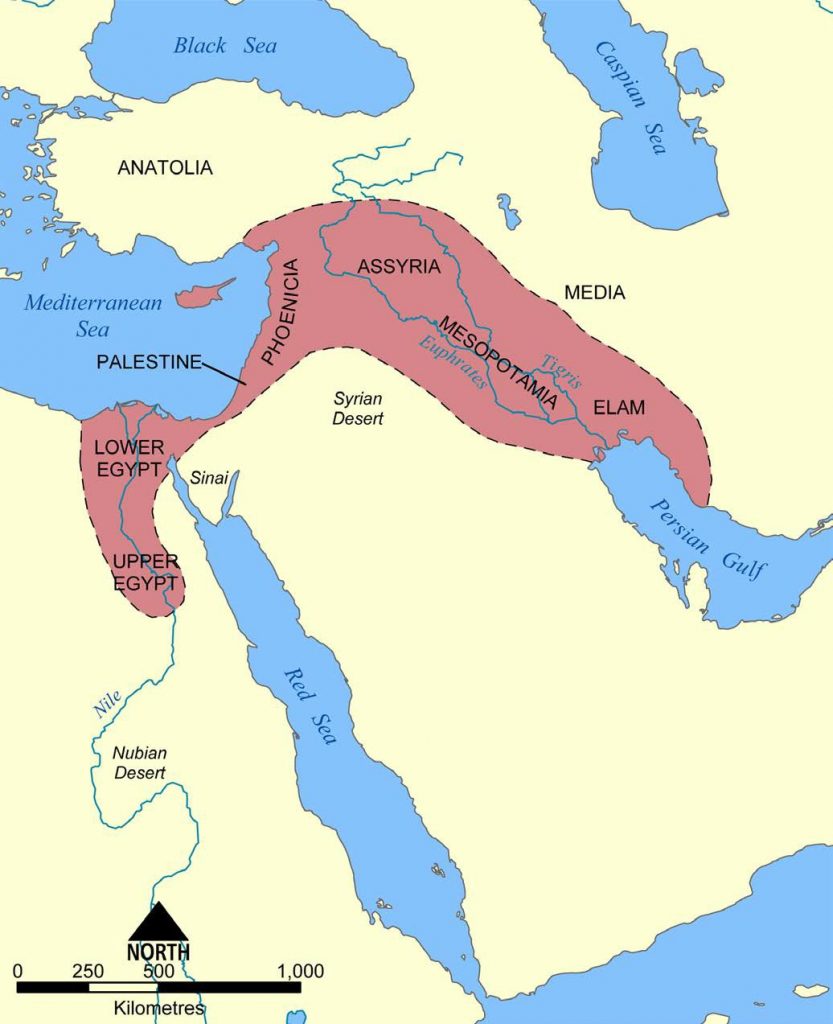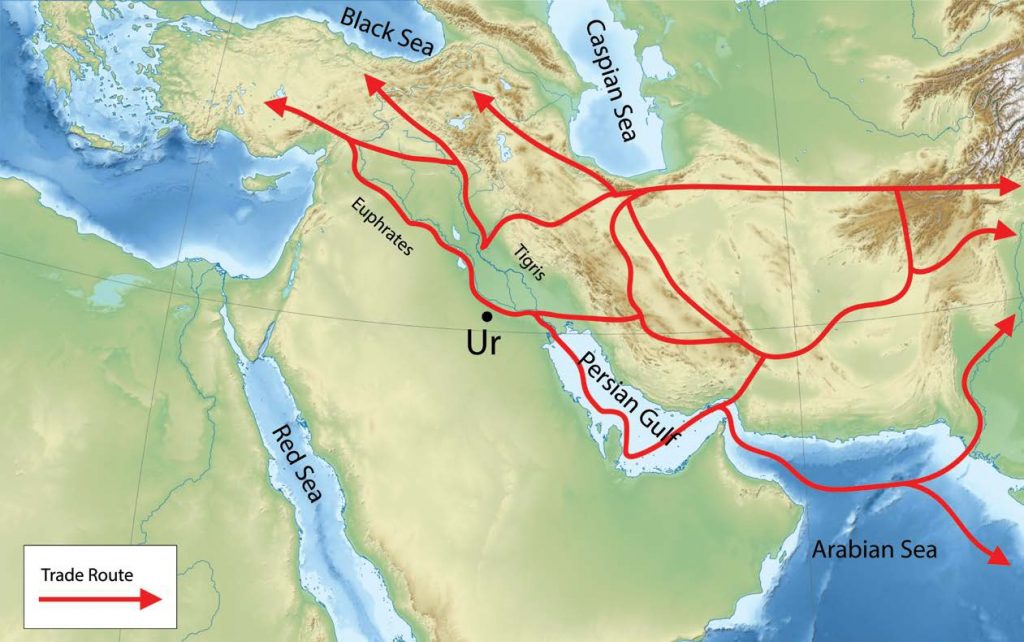Ancient Mesopotamia
Crash Course: Mesopotamia
Ancient Mesopotamia
Mesopotamia is located in an area known as the Fertile Crescent. Archeologists have found some of the earliest known sites of agricultural production in the Fertile Crescent. Although much of this region received little or irregular rainfall, the Tigris and Euphrates Rivers provided large amounts of freshwater, facilitating agricultural production and the development of early civilizations. The Greeks later recognized the significance of the river systems to these ancient societies and referred to the region as “the Land between the Rivers” or Mesopotamia.

The Tigris and Euphrates Rivers both originate in the Taurus Mountains of eastern Anatolia and flow southward to empty into the Persian Gulf. The rivers carry and deposit silt downstream, enriching the soil. In general, the richer soils and availability of water in areas that in the north otherwise had little rain, or else towards the south had concentrated months of rainfall followed by long, dry spells, encouraged settlement near the rivers. The areas closer to the Persian Gulf, known as Lower Mesopotamia, in particular, were attractive to early settlers because they had extremely fertile soils. People built some of the earliest cities, including Uruk, Eridu, and Ur, in Lower Mesopotamia.
While the Tigris and Euphrates Rivers did provide water to the region, their floods were unpredictable and could even be catastrophic when they washed away entire settlements. In response, the region’s residents created irrigation canals and drainage ditches to control the flow of water. They also stored water in reservoirs to use during the dry months of the year. Additionally, in parts of Lower Mesopotamia, the courses of the rivers and their tributaries changed frequently, so people either had to move to follow the water’s new path or divert a river to continue supplying water for their settlement. As regular access to water supported agricultural surpluses and population growth, people tended to fare better against the unpredictability of the floods, seasonal changes, and the rivers’ changing courses when they lived in settlements capable of maintaining irrigation canals, drainage ditches, and water reservoirs.

The rivers offered another benefit to ancient Mesopotamians. Just as the rivers were definitely important to meet people’s everyday needs for water and for agricultural production, so they also facilitated trade. While people made use of local resources, like mud to build their homes, in general, Lower Mesopotamia lacked other desired resources, including wood, stone, and precious metals. Traders were able to use the rivers to bring in these resources from Assyria, Anatolia, the Levant, and areas adjacent to the Persian Gulf. Early Mesopotamians also obtained goods from as far away as what today are northern Pakistan and India. Merchants used overland routes that crossed the Iranian Plateau and sea routes, exchanging Mesopotamian products like grains and textiles for luxury goods from the east. Royal cemeteries show that by 2500 BCE Mesopotamian elites were buried with a variety of imports, including beads brought from the Indus River Valley. The rivers and the overland trade routes also facilitated communication and, with it, the sharing of ideas and technologies.

